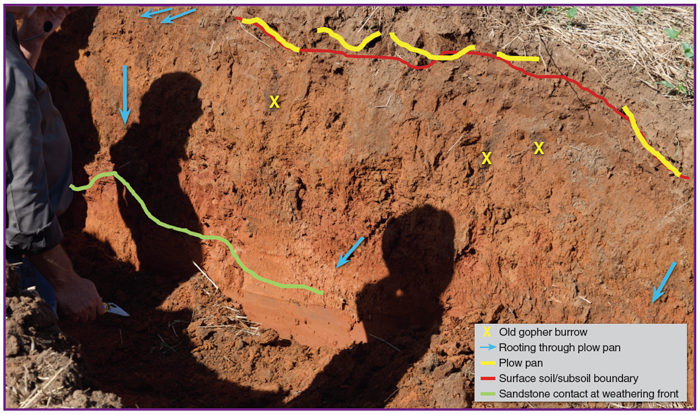No-Till Farmer
Get full access NOW to the most comprehensive, powerful and easy-to-use online resource for no-tillage practices. Just one good idea will pay for your subscription hundreds of times over.

A SOIL PIT dug on no-tiller Alan Mindemann’s farm recently shed light on the role no-till practices play in increasing organic matter and making soils more productive. The pit was dug in mid-July on the long-time no-tiller’s farm near Apache, Okla., as more than 50 farmers attended a No-Till on the Plains Whirlwind Expo event.
The sandy loam field where this root pit was dug had been developed from sandstone, shaped by plant and animal action that broke up the rocks and slowly turned it into soil, says Greg Scott, a soil scientist for the Oklahoma Conservation Commission.
The variable topsoil depth of 2-8 inches (red line) shows it was farmed and eroded in the past. And while the total depth of the soil is only about 3 feet deep, Mindemann is still harvesting 70-bushel winter wheat from it.
Scott notes the plow pan (yellow line) has become discontinuous and almost completely disappeared in places because it’s being destroyed by natural processes. Mindemann pegged the organic matter in this field at 3.4%.
“Even where pockets of it still exist, earthworms have created channels through it and we’ve got roots moving through (blue arrows), so the plow pan’s density has decreased,” Scott says.
At the field day, NRCS soil scientist Steve Alspach pointed out several dark vertical lines a few inches wide called krotovina, or filled-in animal burrows, which in this case were old pocket gopher tunnels (yellow X’s).
No-tillers digging a soil pit should look for…